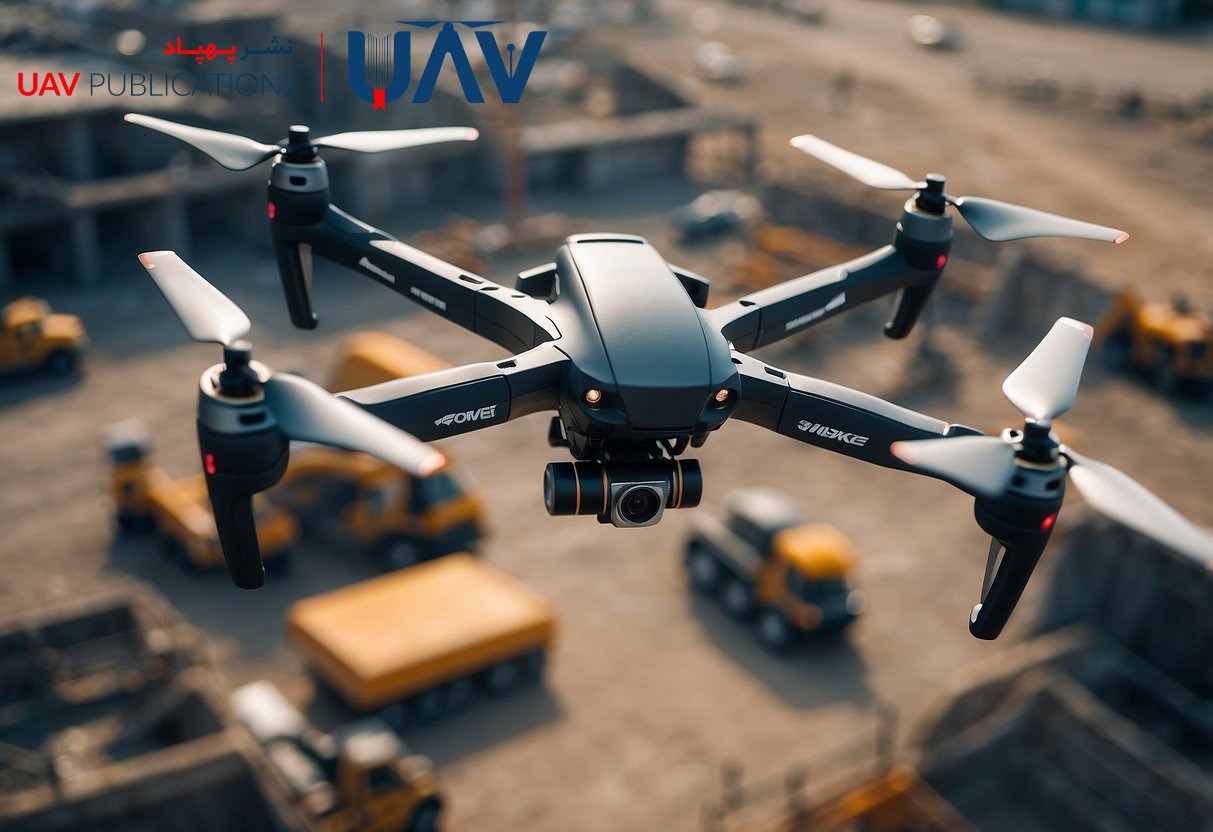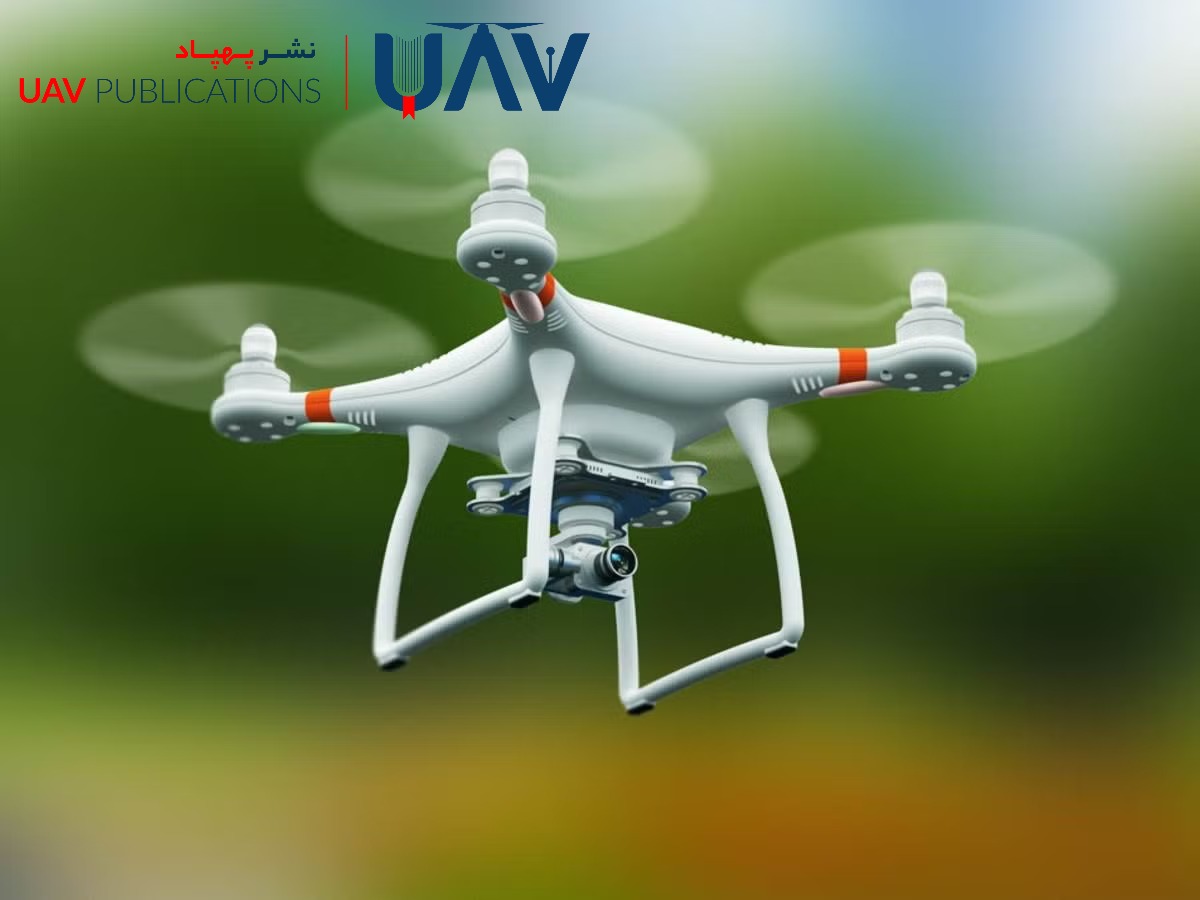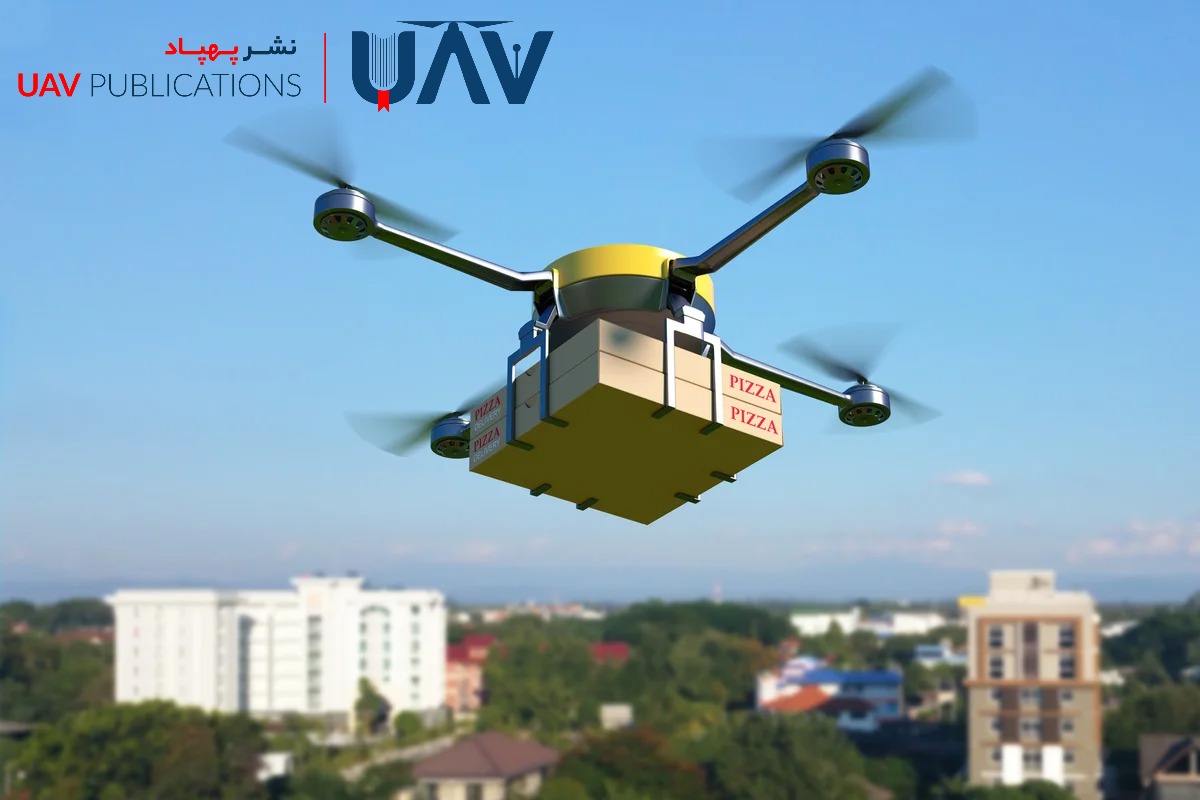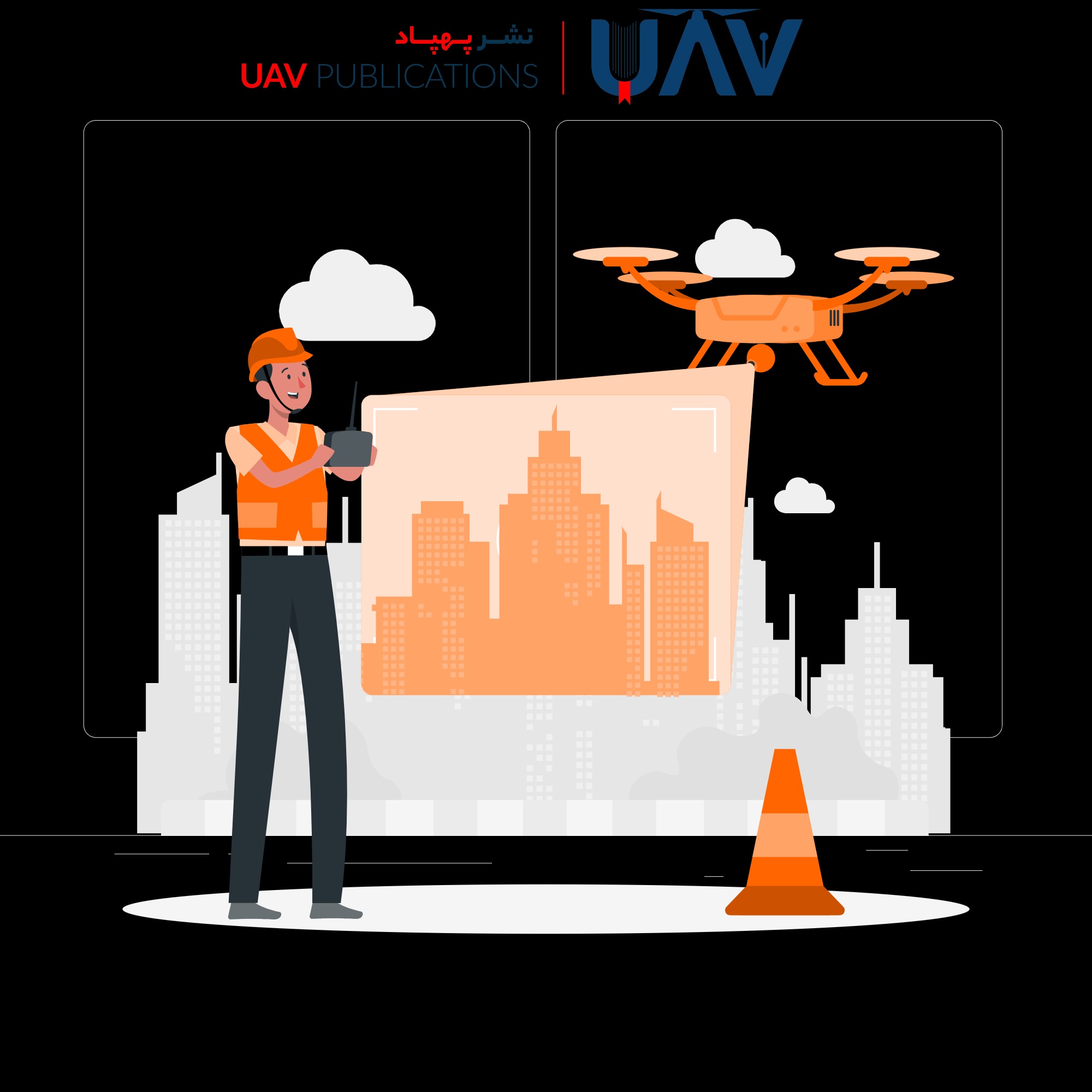From A to Z: Building a Startup in the UAV Sector
In recent years, unmanned aerial vehicle (UAV) startups have experienced remarkable growth. Thanks to their unique capabilities, drones can rapidly penetrate emerging markets. One notable Iranian example is the Avia Company, based in the Sharif Innovation Zone. This company has announced that its products are applicable in areas such as firefighting and emergency response. Overall, establishing a startup in the UAV sector holds significant potential due to the use of cutting-edge technology, diverse service applications, and strong global demand. Drones, empowered by automation and advanced sensors, can accomplish complex tasks more quickly and with lower risk compared to traditional methods.
This article examines the primary applications of drones, as well as the key steps for launching and funding UAV startups.
What Is a UAV?
A UAV, or Unmanned Aerial Vehicle, is a flying device that is remotely piloted without a human onboard. UAVs can take various forms, including quadcopters, fixed-wing models, or even hybrid designs. Depending on their intended use, they fall into multiple categories, including imaging drones, cargo carriers, mapping drones, agricultural UAVs, and emergency drones. Equipped with sensors, cameras, GPS, and sometimes artificial intelligence, drones can operate semi-autonomously or fully autonomously.
They are typically controlled via remote controllers, laptops, or even mobile apps. In recent years, with declining prices, ease of use, and expanding applications, drones have become one of the most prominent tools in modern technology. From filmmaking to environmental monitoring, these intelligent flying machines are offering us a new perspective on the world.
What Is a Startup?
A startup is a newly established business built on innovation, technology, and the aim of solving a real-world market problem. Unlike traditional companies, startups are known for their novel business models, rapid growth, and high risk tolerance. The core objective of a startup is to find a scalable and sustainable business model, rather than merely generating quick profits.
Most startups begin with personal funding or support from early-stage investors such as accelerators or angel investors. They typically operate with small, agile, and creative teams that can swiftly adapt to market feedback. The main difference between a startup and a small business lies in its global vision—startups generally aim to scale into larger markets. Startups play a pivotal role in innovation, job creation, and technological advancement, often receiving support from governments and private institutions. Many of today’s major global businesses—such as Uber, Airbnb, and Amazon—once started as small startups with bold ideas and dedicated teams.
The Global UAV Startup Landscape
Globally, UAV startups have witnessed rapid growth. As equipment becomes more affordable, flight technologies advance, and demand for precise data increases, thousands of startups have emerged in this field. These companies operate across various domains, including smart agriculture, aerial delivery, cinematography, security, environmental monitoring, and geospatial mapping. Countries like the United States, China, and Germany are at the forefront of this industry.

For example, Zipline operates in Africa, delivering medical supplies to remote areas via drones. Similarly, DJI, based in China, has grown into a global leader in drone manufacturing. Other startups are developing autonomous systems, analytics software, and specialized drones for niche applications. Despite intense competition, the UAV sector still offers significant room for growth. Emerging technologies, such as AI, machine learning, and next-generation batteries, enable startups to build drones that are more accurate, safer, and more efficient. Forecasts suggest that the global drone market will reach tens of billions of dollars by 2030, with startups playing a central role in this expansion.
UAV Startups in Iran
In Iran, UAV startups have also experienced notable development in recent years, although they still face challenges such as international sanctions, limited access to advanced equipment, and a lack of clear regulatory frameworks. Some teams have entered sectors like precision agriculture, aerial imaging, emergency response, industrial inspection, and mapping, offering innovative services.
Universities, science and technology parks, and accelerators like “Sharif Accelerator” have provided platforms for nurturing these ideas. However, a significant portion of the sector’s potential remains untapped due to financial, regulatory, and technical constraints. On the governmental side, institutions such as the Ministry of Agriculture and the Disaster Management Organization have shown growing interest in drone technology, which could strengthen domestic markets.
With a well-educated and capable workforce, Iranian startups could potentially secure a significant share of the regional UAV market and even export services and software internationally, provided they receive the necessary infrastructural, financial, and legal support. Furthermore, developing clear regulations for UAV operations and safety is crucial for the sustainable growth of the sector.
How to Start a UAV Startup
To launch a UAV startup, begin by identifying a real-world problem. Define your target market—do you want to work in agriculture, transportation, filmmaking, mapping, or another sector? Next, conduct market research, analyze competitors, and assess technological needs. Form a team of specialists—typically combining hardware engineers, software developers, and marketers.
Developing a prototype is essential; in the early stages, you can modify existing drones for your intended use case. Initial funding may come from investors, accelerators, or personal resources. Obtaining flight permits and complying with aviation and safety regulations is critical. Field testing in real-world environments will clarify the product’s development path. Additionally, creating a custom software solution (for flight management, data analytics, or reporting) can offer significant added value.
Most importantly, respond to early user feedback and improve the product iteratively using Agile methods. With targeted marketing and incremental development, you can scale your business effectively.
Applications of UAVs Across Industries
Drones have a wide range of applications across multiple industries, and this diversity continues to grow. In agriculture, UAVs are used for field monitoring, precision spraying, crop health analysis, and yield prediction. In filmmaking and media, they offer cinematic aerial footage for films, TV programs, and commercials. In mapping and civil engineering, UAVs equipped with GPS and high-resolution cameras can create detailed 3D maps and topographic models.
For search and rescue operations—especially in remote or disaster-stricken areas—drones play a critical role in locating individuals and delivering aid. In security and industrial inspections, UAVs can safely access hazardous zones to assess the condition of infrastructure. In logistics, companies are experimenting with drone delivery in urban settings. In environmental monitoring, drones assist in tracking wildlife, detecting forest fires, and measuring air pollution.
Generally, wherever there is a need for aerial perspective, rapid access, or automation, drones can provide an intelligent and efficient solution.
UAVs in Agriculture
In the agricultural sector, UAVs are used for field surveillance, targeted spraying, and pest control. For instance, the Swedish startup Flox has developed drones equipped with artificial intelligence to detect pests and wildlife in crop fields. These UAVs analyze imagery in real time, identify animals, and deter them using ultrasonic repellents, thereby reducing crop damage and improving yields. In Iran, agricultural drones are employed for soil mapping and water resource management.
Intelligent spraying via UAVs allows for better coverage and reduced pesticide usage. Furthermore, capturing aerial imagery with high spatial resolution enables agricultural managers to monitor plant growth and identify issues proactively.
UAVs in Forestry and Environmental Management
Drones are increasingly used for forest monitoring and natural resource management. The Polish startup Prometheus, for example, produces drones that map forest areas by collecting data on canopy coverage, tree density, and damaged zones. This information enables environmental authorities to monitor the effects of climate change and respond to forest fires more effectively.
UAVs are also instrumental in biodiversity tracking and wildlife conservation. Equipped with infrared cameras and acoustic sensors, they can detect endangered species and contribute to conservation planning without disturbing natural habitats.
UAVs in Construction
In construction, manual inspection and site mapping can be time-consuming and costly. UAVs provide high-speed, high-definition images and videos of construction progress. The Indian startup Eagletronics Aviation has built drones capable of autonomously inspecting construction sites to detect structural flaws such as cracks and surface irregularities.

Captured imagery is sent directly to the management team for immediate analysis and decision-making. Additionally, drones can monitor material inventory and precisely document various stages of a project. Their use improves safety by reducing the need for manual inspection in hazardous environments.
UAVs in Infrastructure Monitoring
Monitoring critical infrastructure such as bridges, power lines, water reservoirs, and telecom towers is another vital application of UAVs. The Irish startup Engineers with Drones specializes in simplifying industrial inspections using advanced UAV technology. Their drones can rapidly scan infrastructure and generate detailed 3D models.
This reduces human error and increases safety, as engineers no longer need to climb risky structures. Regular UAV-based inspections enable ongoing maintenance without extended operational downtimes, thereby facilitating faster decision-making and more efficient asset management.
UAVs in Transportation and Medical Services
One key application of UAVs is air-based delivery and emergency services. The Spanish company Aldora Tech designs drones that not only carry payloads but also include control and monitoring software. These UAVs can quietly transport medical samples, emergency equipment, or rescue kits to remote or inaccessible locations.
During natural disasters or in underdeveloped areas, drones can deliver medicine and supplies much faster than conventional methods. Beyond emergency use, UAVs are being increasingly adopted in commercial logistics to provide small and large packages, enhance efficiency by reducing traffic, and improve delivery times.
Step-by-Step: Ideation and Market Analysis for UAV Startups
The first step in launching a UAV startup is generating an innovative idea. Identify a real problem in any of the previously mentioned fields or another niche market. Conduct market research and competitive analysis to validate demand for your proposed solution.
According to entrepreneurial best practices, validating an idea often requires conducting interviews with potential users. In the startup lifecycle, the pre-seed stage involves turning the concept into a viable business model. Founders may seek initial funding and mentorship from accelerators at this point. Participating in startup events and bootcamps allows for networking with investors and mentors, potentially accelerating the realization of the idea.
Crafting a Business Plan and Pitch Deck
After refining the idea and conducting market analysis, it’s essential to prepare a comprehensive business plan and create a pitch deck. A pitch deck is a brief, visual presentation—usually in slide format—that introduces your business model, product or service, competitive edge, and target market to investors.

An effective pitch deck highlights the problem, presents your solution, showcases market potential and competitors, and introduces the founding team. It should also include a financial roadmap and valuation insights to reassure investors of your preparedness. The pitch deck acts as a bridge to investor meetings and must strike a balance between clarity and brevity.
Building a Minimum Viable Product (MVP)
Once the pitch deck is finalized and initial funding is secured, the next step is to develop a Minimum Viable Product (MVP). An MVP is the simplest version of your product that contains just enough features to satisfy early adopters and gather feedback. This approach allows your team to test assumptions at minimal cost and adjust your strategy based on real-world insights.
Launching the MVP helps prevent unnecessary resource expenditure on fully developed products that lack market fit. After releasing the MVP to a test market, your team can use customer data to prioritize future product features.
Seed Round Investment
The next phase is raising a Seed Round to fund MVP enhancement and broader market entry. In this stage, external investors typically provide capital in exchange for equity. At this point, your startup’s valuation may still be modest, requiring you to relinquish a larger ownership stake to secure the necessary funds.
This capital enables you to expand the team, improve the product, and deepen market research, laying the groundwork for a Series A round.
Business Valuation (Valuation)
One of the most essential aspects of fundraising is determining your company’s valuation—an estimate of its total worth. Valuation takes into account various factors, including market potential, proprietary technology, existing assets, and the capabilities of the founding team. There are multiple methods to estimate a startup’s valuation, including discounted future income projections and comparisons with similar companies.
Before seeking investment, it is crucial to assess your valuation carefully to ensure you offer investors a fair equity share without undervaluing or overpricing your business. The type of investor also matters: for instance, angel investors typically engage at the seed stage and provide early guidance, while venture capital firms tend to enter in later stages such as Series A and beyond.
Series A Funding
Once your product is validated and you have gained initial market traction, your startup will likely require additional capital to scale its operations. In the Series A round, larger venture capital funds and institutional investors typically enter the scene.
According to venture capital frameworks, this round focuses on proving the viability of the business model and scaling operations, such as expanding the target market, building a sales and marketing team, and optimizing customer support. With Series A funding, the company can pursue accelerated growth and even expand into new geographic or sectoral markets. At this stage, the company’s valuation is generally higher than in the seed round, allowing founders to raise more capital with less equity dilution.
Series B Funding
Series B is all about scaling up. If Series A is about proving the model, Series B is where a company significantly grows its operational capacity. This may include mass production, international expansion, and diversifying product lines. Investors in this round are typically seeking startups with a consistent upward growth trajectory.
Valuations are typically much higher, and funding amounts increase substantially. Companies may use a mix of equity sales, convertible notes, or issuing new shares to raise capital. The Series B round is often the point at which a startup transitions into a mature growth company.
Series C Funding
In Series C, the startup is often aiming for dominance in its market or preparing for major corporate milestones such as acquisition or an initial public offering (IPO). Capital raised during this stage is typically used for strategic expansion, such as acquiring competitors, entering new markets, or launching new product lines.
At this stage, valuations are often very high, and significant institutional investors, private equity firms, or even banks may participate. Companies in this phase are typically well-established, with proven products, scalable operations, and strong market presence. The goal is often to position the company for a successful IPO or a significant merger or acquisition.
What Is Venture Capital (VC)?
Venture capital (VC) is a form of private equity financing provided to early-stage, high-potential startups. Venture capitalists invest funds—often pooled from institutional investors or wealthy individuals—into startups in exchange for equity stakes.

Unlike banks that issue loans expecting regular repayments, VCs aim for capital gains through equity appreciation. In addition to financing, many VC firms provide strategic support, management consulting, and network access to improve a startup’s chances of success. VCs typically invest in stages, and once the company matures, they seek an exit—usually via a trade sale or IPO—to realize their return on investment.
Initial Public Offering (IPO)
An Initial Public Offering (IPO) is one of the final stages in a startup’s financial journey. In an IPO, a private company offers shares to the public through a stock exchange for the first time. This process involves rigorous legal audits, financial disclosures, underwriting by investment banks, and compliance with market regulations.
Following the IPO, the company becomes publicly traded and must adhere to transparency and quarterly reporting standards. Typically, IPOs occur after a company has completed several rounds of investment and demonstrated strong profitability. IPOs provide access to large-scale capital, enable founders and early investors to cash out some of their shares, and elevate the company’s brand and credibility.
Advantages of Going Public
Going public offers multiple advantages. First and foremost, an IPO enables the company to raise substantial capital without incurring debt. Public shares are highly liquid, allowing investors and founders to realize gains. Listed companies also gain greater visibility, attract more customers and partners, and can recruit talent more effectively, offering stock-based incentives like employee stock ownership plans (ESOPs).
Public companies are often perceived as more trustworthy due to their increased regulatory transparency, which further enhances investor and customer confidence.
Drawbacks of an IPO
Despite its benefits, an IPO comes with significant drawbacks. The process is time-consuming, expensive, and highly complex, sometimes taking up to two years. Preparing audited financials, navigating regulatory hurdles, and coordinating with underwriters require intense resources and management focus.
Following the IPO, management may face pressure to deliver short-term results, potentially compromising long-term innovation. Reporting requirements become stricter, and the company’s financial performance becomes publicly scrutinized. High legal and banking fees also add to the cost. These factors must be weighed carefully before deciding to go public.
Accelerators and the Startup Ecosystem
Accelerators and incubators play a crucial role in the growth of startups. These organizations provide early-stage ventures with co-working space, mentorship, and sometimes initial capital to help turn an idea into a product. As mentioned earlier, many founders join accelerators during the pre-seed stage to fine-tune their business plan and access funding.
For UAV startups, accelerators can provide access to flight-testing facilities, university labs, and investor networks. Universities and tech parks often organize conferences, offer research grants, and facilitate partnerships with venture capital firms. Networking with peer startups and participating in exhibitions also helps increase market visibility.
Future Outlook and Opportunities in the UAV Industry
The UAV industry is growing rapidly, with no signs of slowing. Innovations in artificial intelligence, machine learning, and the Internet of Things (IoT) are making drones more innovative and more efficient. For example, autonomous drones with real-time decision-making capabilities are making fully automated delivery services a reality.

Emerging markets, such as underwater drones and heavy-lift aerial transport, are also opening new frontiers. The convergence of drone technology with ground robotics, edge computing, and smart infrastructure is set to revolutionize logistics, surveillance, agriculture, and emergency response.
Establishing a startup in this space is not only an opportunity to serve existing markets but also a chance to create transformative solutions for industries worldwide. With proper planning, a robust MVP, and timely fundraising, UAV startups have the potential to become industry leaders in tomorrow’s aerial technology landscape.
Final Thoughts
Building a UAV startup requires a strategic, step-by-step approach. Start with identifying a practical idea in one of the UAV application sectors and conduct a thorough market analysis to shape your business model. Then, create a business plan and pitch deck to secure initial funding, followed by the development of an MVP to test product-market fit.
After raising a seed round and validating your business through traction and feedback, you can progress through Series A, B, and C rounds—each enabling broader growth and deeper market penetration. Venture capital firms often provide not just funding but also strategic guidance, making them invaluable partners for scaling. Ultimately, if successful, an IPO can serve as both a funding milestone and an exit strategy.
By following this roadmap and seizing emerging opportunities, UAV startups can become key players in various industries and make a significant contribution to the future of technological innovation.

